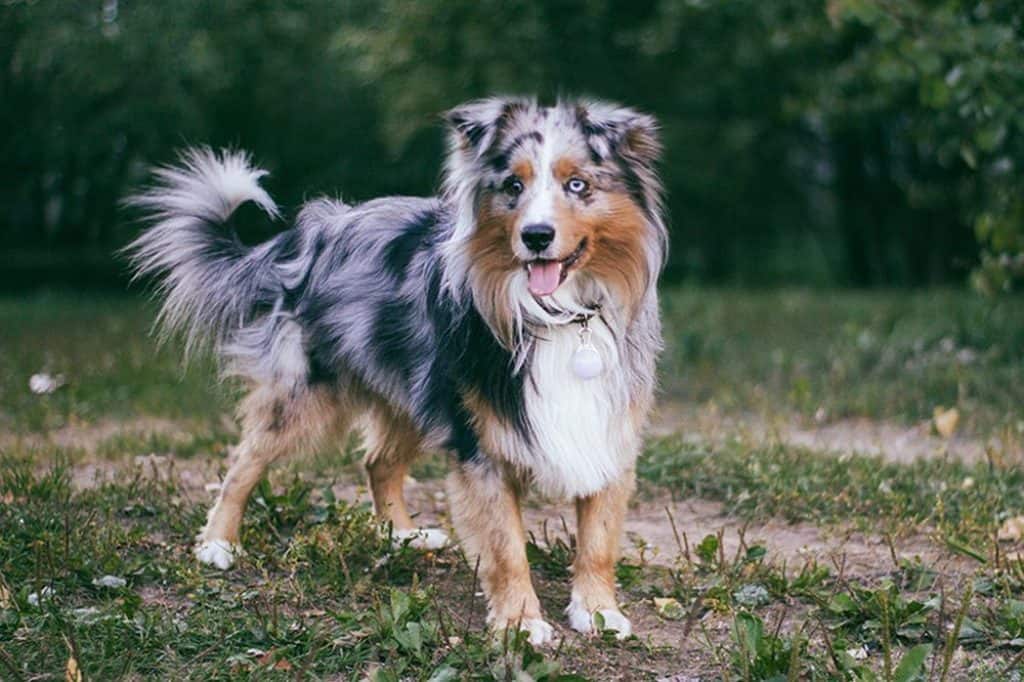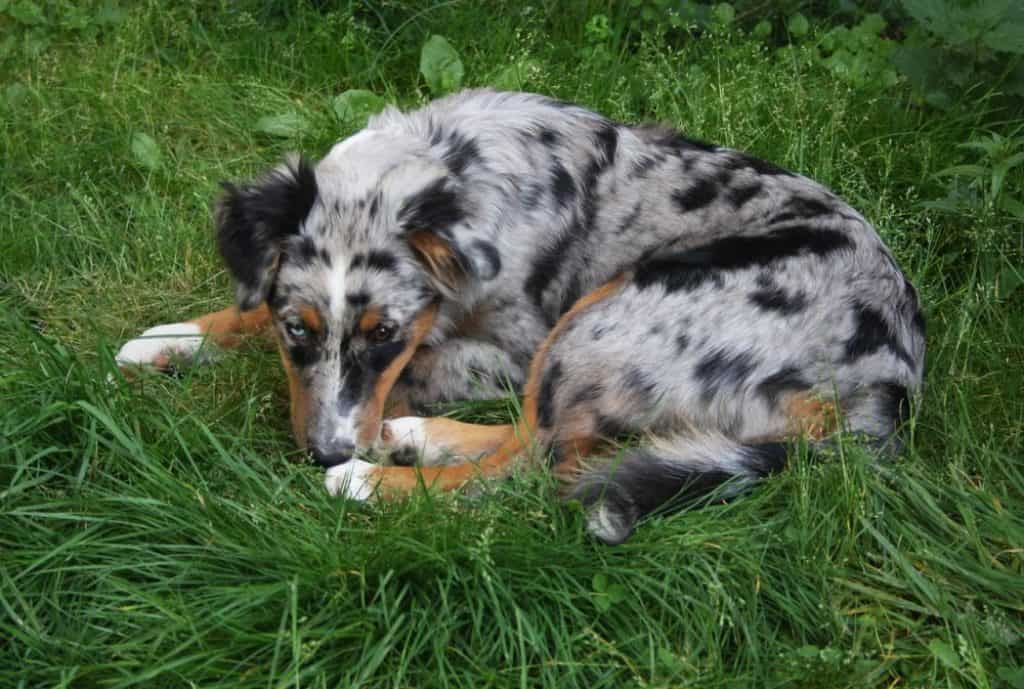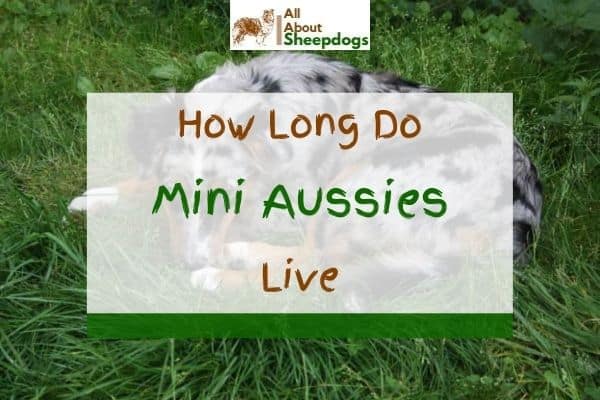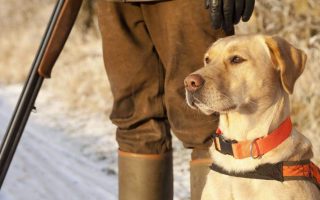Mini Australians Shepherds have most of the traits that made their bigger cousins such a popular breed.
They’re loyal, affectionate, intelligent, very energetic and up for any activity, you may have planned.
All this makes them a wonderful addition to any family and a dog that will be a faithful companion to their owner for years.
Unfortunately, our four-legged friends don’t live as long as we do.
So, if you plan on getting a Mini Aussie, it’s a good idea to do find some information on how long do Mini Australian Shepherds live.
In this article, you’ll learn about Miniature Australian Shepherd lifespan and also what can you do to help them live a longer and healthier life.
I’ll explore what are the most common health issues of this awesome breed and share a few tips on how to best take care of them.
[wpsm_toplist]
How Long Do Mini Australian Shepherds Live?

Mini Australian Shepherd is a relatively healthy breed, especially if properly taken care of.
Their life expectancy is a little bit over if what is considered average for dogs. On average, a Miniature Australian Shepherd lifespan is 12-15 years.
How much they will actually live depends on several things.
Besides genetics, which always plays a big role in any dog’s lifespan, factors that can help your Mini Aussie live longer are a balanced diet, proper care, lots of exercise, and regular vet checkups.
This breed reaches full physical maturity at around one year old.
However, it takes a bit longer for them to mature emotionally despite the fact that they’re known as a very intelligent breed.
Mini Australian Shepherds don’t mature mentally until they’re two or three years old.
At about this time, they will start to come down a bit and learn to better regulate their endless energy.
What Health Issues do Mini Aussies Have?

As I said, Mini Aussie is a rather healthy breed, but, like all dogs, this breed is still prone to certain health issues.
As expected, due to the similar genetic material, Mini Aussie shares a lot of common health problems with its bigger cousin, Australian Shepherd.
It’s good to know that Miniature Australians Shepherd that feature merle color often face hearing and vision problems.
While this color belongs to the most popular among the owners, the genes responsible for this unique coloration are also the reason for these issues.
Below are the most common health concerns that the owners of this breed should be aware of.
Hip Dysplasia
Hip Dysplasia is a rather common health issue with a lot of dog breeds. It occurs when the thighbone doesn’t fit properly with the hip joint.
This causes grinding and can be very painful for the dog.
It’s more common with the larger dogs, but some smaller breeds including Miniature Australian Shepherd can suffer from it.
Besides being painful, this condition can cause lameness on one or both rear legs.
Depending on how severe it is, Hip Dysplasia can be treated with anti-inflammatory medications, physical therapy, or surgery.
Progressive Retinal Atrophy (PRA)
This is an eye disorder that can lead to the degeneration of retinal cells. Eventually, the loss of photoreceptors in the back of the eye can cause blindness.
Unfortunately, this condition is not treatable, but antioxidant supplements can delay severe symptoms and blindness.
As it’s not painful, many dogs manage to lead a full and happy life even with PRA.
Multidrug Resistance Mutation (MDR1)
MDR1 is a rather common genetic mutation, mostly found with herding breeds.
Dogs prone to this condition, like Mini Australian Shepherd, are more prone to certain side effects of some medications.
These medications include those used to treat diarrhea and prevent parasites.
The mutation can be identified by genetic testing which is the surest way for the vet to recognize this condition and recommend suitable medications for your dog.
How to Care for Mini Australian Shepherd?

Proper care is a must if you want your Mini Aussie to live a long and happy life. They’re not extremely demanding but will still require a decent chunk of your time.
Exercise
If you’re not used to more active breeds, prepare for the intensity this breed will bring into your house.
They have a lot of energy and it’s up to you to help them release it. They have strong herding instincts and enjoy being active.
They need about 90 minutes of daily exercise and that should include some walking, running, and of course, a bit of fun.
Otherwise, they may develop problematic behavior.
They’re very fast learners so both of you can have some fun training them to perform various tasks.
As long you can provide them with sufficient exercise, they’ll have no problem living in the apartment or a similar small space.
Feeding
Like all dogs of their size, Mini Aussies don’t eat much, but you should still provide them with high-quality food.
You can buy food manufactured by commercial brands or consult with a vet on how to prepare your own.
Make sure that food is appropriate for the dog’s age.
In general, Miniature Australian Shepherd should eat about 1 – 1.5 cups of food per day.
As they’re very active, their diet should be rich in fat and protein.
Grooming
Mini Aussies feature a double coat which includes a long-hair topcoat and wooly undercoat.
Still, they are not among the breeds that require a lot of grooming work.
They don’t shed much except during the shedding season which may occur once or twice a year.
For the better part of the year, brushing them once a week is more than enough.
During the shedding season, they should be brushed more frequently along with the additional raking of the undercoat.
They also don’t need to be bathed very often, only when they’re very dirty. As with all dogs, make sure to trim their nails and brush their teeth regularly.
Conclusion
Mini Australian Shepherds are fantastic dogs, friendly, playful, and loving.
They’re a true joy to have around the house and you should do everything in your power to make your companionship last as long as possible.
Making sure that your Mini Aussie is happy and healthy should always be your first priority.
As I explained, they don’t ask for a lot, but you’ll still have to dedicate some time to them.
The most important thing is to understand that this is a very active breed that thrives when given enough exercise.
Of course, you should always try to make the daily activity with your dog fun for both you and your family.
This is the best way to make sure that your pet stays with you for a long time.






